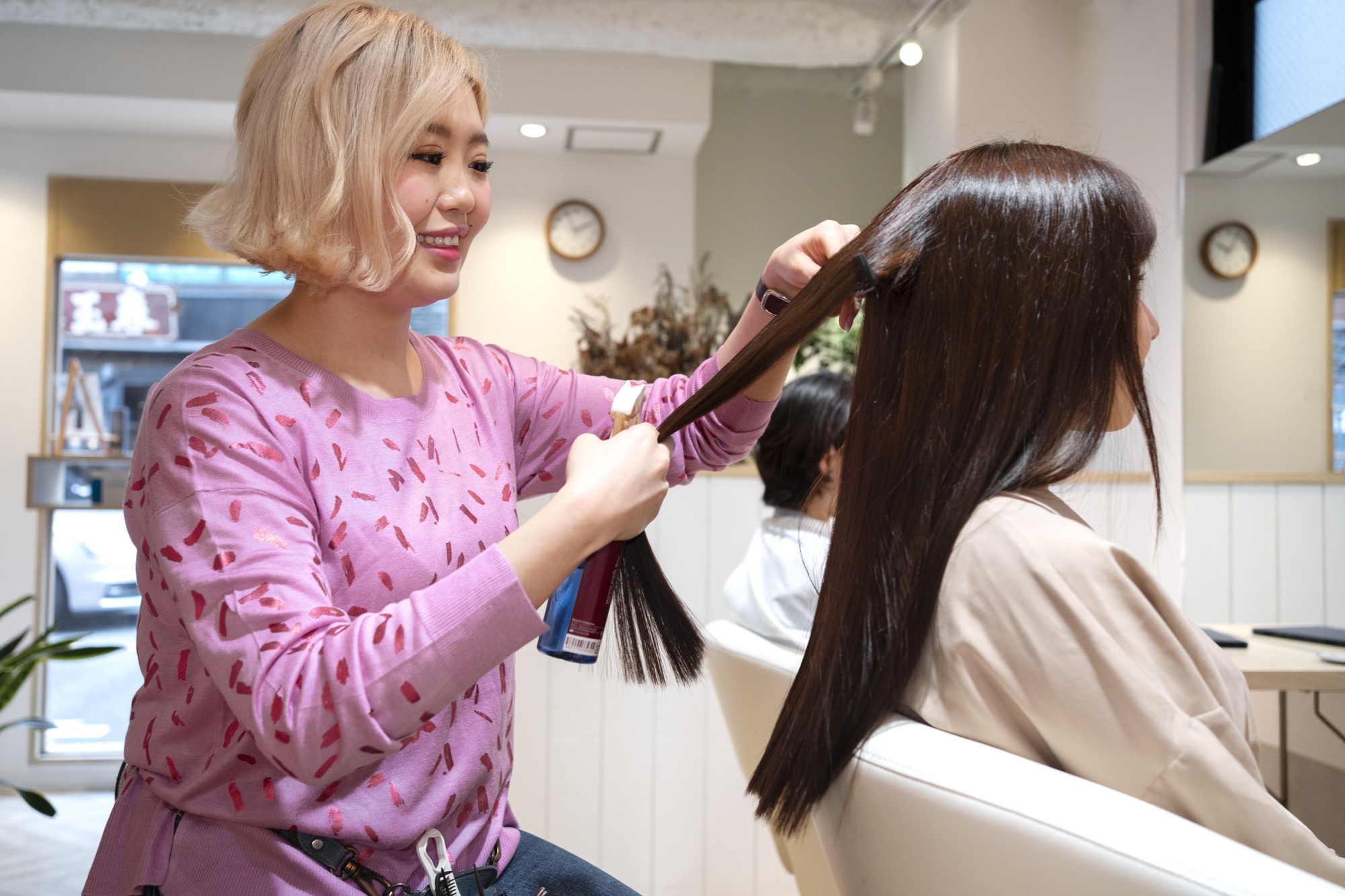


Hair straightening and smoothing are two of the most common hair care methods for getting lustrous, manageable, and sleek hair. Both treatments aim to make your hair smoother, but they are not the same and each offers advantages of its own. It's okay if you're having trouble deciding between them. We will explain the main distinctions between hair straightening and smoothing in this blog post so that you may decide which option is best for you based on your lifestyle, desired look, and hair type.
The purpose of hair smoothing is to improve shine, lessen frizz, and make hair easier to handle. The main objective of smoothing is to make the hair's cuticles smoother, which adds gloss and less frizz. Your natural curls or waves will still be evident because it doesn't permanently change the texture of your hair, but they will be softer, easier to maintain, and more controllable.
The Process of Hair Smoothening:
The purpose of hair smoothing is to improve shine, lessen frizz, and make hair easier to handle. The main objective of smoothing is to make the hair's cuticles smoother, which adds gloss and less frizz. Your natural curls or waves will still be evident because it doesn't permanently change the texture of your hair, but they will be softer, easier to maintain, and more controllable.
Benefits of Hair Smoothening:
Frizz Reduction: One of the primary reasons people opt for hair smoothening is to control frizz. If you have unruly, frizzy hair, smoothening can help tame the frizz and give your hair a polished look.
Maintains Natural Texture: Unlike hair straightening, smoothening does not change your hair texture completely. Your natural curls or waves remain, but they are softened and more controlled.
Long-Lasting Effects: The results of smoothening typically last for about 4 to 6 months. Over time, as your hair grows, the treated sections will fade and return to their natural texture.
Suitable for Wavy or Curly Hair: Smoothening is ideal for people with wavy or curly hair who want to reduce frizz and make their hair more manageable, without completely losing their natural waves or curls.
In contrast, hair straightening is a more involved procedure intended to fully straighten wavy or curly hair. To straighten hair, the natural links in its structure must be broken. Among the different kinds of straightening treatments are Japanese hair straightening, keratin treatments, and chemical straightening. Due to the chemicals used, the procedure can occasionally be more harmful to the hair than smoothing, even though the results are typically more permanent.
The Process of Hair Straightening:
To dissolve the natural links in the hair's structure, a stronger chemical solution is administered to the hair during hair straightening. After that, heat is used to straighten the hair, sealing it in place. To reduce damage, some straightening procedures, including keratin treatments, may additionally apply a protective protein. Depending on your hair's thickness and length, the procedure can take anywhere from three to eight hours, which is more time-consuming than smoothing.
Benefits of Hair Straightening:
Permanent Straightening: One of the biggest advantages of hair straightening is that it gives you permanently straight hair, or at least until your hair grows out. For individuals with very curly or oily hair, straightening can be life-changing by completely removing the curls and giving them sleek, straight locks.
Long-Lasting: The results of hair straightening can last for up to 6 months, depending on how well you take care of your hair after the treatment. The new hair that grows out will retain your natural texture, so you may need to touch up the straightening treatment as your hair grows.
Ideal for Tightly Curly Hair: Straightening is the go-to solution for people with very curly, coily, or thick hair who want a completely straight look. The treatment can completely remove tight curls, giving you smooth, straight hair.
Intensive Process: The chemical and heat-based process of straightening can result in a more dramatic change in texture compared to smoothening. This can be both a benefit and a drawback depending on the look you're going for.
Although improving your hair's structure and manageability is the goal of both hair straightening and smoothing, some important distinctions between the two can help you select the optimal treatment for your hair type and objectives.
Effect on Hair Texture
Duration of Results
Maintenance and Aftercare
Suitability for Different Hair Types
Cost
Hair Damage Potential
Choosing between hair smoothening and hair straightening depends on your desired results and your hair type. Here are some guidelines to help you decide:
Hair smoothening and hair straightening are both great treatments, but they serve different purposes. Smoothening is best for taming frizz and softening curls while straightening offers a permanent solution for those who want completely straight hair. Consider your hair type, the look you want to achieve, and how much maintenance you are willing to commit to before deciding which treatment is right for you. Consulting with a professional stylist can also help you make the best decision based on your unique hair needs.